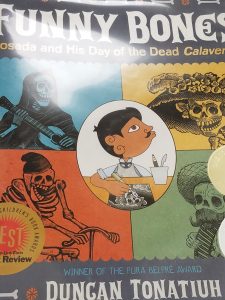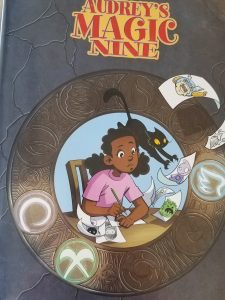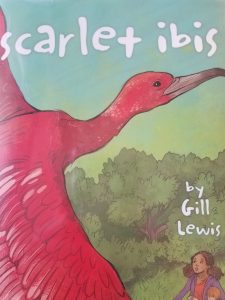
Title: Fly Away Home
Author: Eve Bunting
Illustrator: Ronald Himler
Publisher and Year Clarion Books, 1991
Number of pages: 32
Tags/Themes: Emotion, Family, Fiction, Picture Book, 2-3, Evan White
Genre: Realistic Fiction; Family, Children’s Book
Descriptive Annotation: Fly Away Home is about a father and son living in an airport. There are special rules on how to live in the airport so they don’t get caught like to always be moving and not talking to people. The son observes how his dad is always trying to find a job so they can find a real home for them, but often falls short. The boy is still optimistic and works to help his dad. He returns bags for 50 cents and believes he will find a permanent home one day.
Classroom Application: I can use this book to reinforce social sciences/culture to show different areas of living. A unit like urbanism, suburbs, rural and going deeper into types of places people live in and discuss different homeless areas. This text also demonstrates Social and Emotional Learning Standards about demonstrating caring and concern for others. Teaching the students how anyone can be affected by a situation and their bad situation does not necessarily mean it’s the induvial fault to create empathy.
Linguistic and Cultural Diversity Analysis: This book represents the poor/homeless culture. Teaching kids’ different people can be homeless, the young, old, families. Also teaching being poor does not mean you’re stupid or deserving of it like media can display. The young boy is responsible and saves his money, the father works endlessly to provide for his son. The Father and son are very smart and know how not to get caught, and they are very friendly with the other homeless residents. I might introduce this book giving each student or group of students a setting and they can brainstorm how they might survive or be able to live in the setting. “He and I collect rented luggage cars that people have left outside and return them for fifty cents each. If the crowds are big and safe, we offer to carry bags” (22). This quote would connect to the students before text activity. The young boy uses his head to find a way to make money. I think this quote also shoes how the boy are maturing faster than other children. The tone is serious and very straightforward. The son needs to be quick and fast in his days’ work to make the most money and his language shows he needs to be straight to the point. Even though the boy is maturing faster he still does not know how to handle his emotions. “Sometimes I get mad and I want to run at them and push them and shout, ‘Why do you have homes when we don’t? What makes you so special?’ that would get us noticed all right” (30). This quote shows the difficulty of being homeless and the toll is does to your emotions. The text shows how the boy is struggling to control his emotions. He wants to release his emotions in an outburst , but the boy still knows what consequences could be for out bursting. It shows the students there are consequences for actions they can do on impulse, especially impulse actions the homeless could do in an airport.




